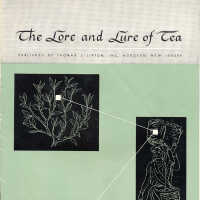Collections Item Detail
Booklet: The Lure and Lore of Tea. Published by Thomas J. Lipton, Inc., Hoboken, N.J. 1956 printing.
2012.001.0178
2012.001
Purchase
Purchase
Museum Collections.
1951 - 1956
Date(s) Created: 1951 Date(s): 1951-1956
Notes: 2012.001.0178 ==== (page [1] front cover) The Lure and Lore of Tea. Published by Thomas J. Lipton, Inc., Hoboken, New Jersey. ==== (pages 2-3) The Lore and Lure of Tea TEA IS AN AMERICAN DRINK. If the contrary seems to be true, it is only because most Americans today can't remember back to the days of 1773 when those of us on this side of the ocean drank as much tea as the English. Granted, tea is not a tradition in the United States as it is in some countries; nevertheless America is the second largest importer of tea in the world. And amazingly enough, statistics show that less than 8% of it is sipped at tea parties. Next to water tea is probably the most universal beverage of mankind. And also next to water, it's the most inexpensive beverage that we can serve. Today, 25 billion cups of tea are being consumed each year by Americans, at a cost of less than one cent a cup. Properly brewed tea tastes good. Its brisk flavor soothes and relaxes while giving a new lift to weary bodies and tired minds. Tea is romantic, too. Tea was born in mythical legends. Tea has made history. Tea has built empires. Tea has been a bridge between the East and the West. What is the origin of tea? Interesting and amusing stories have come down through the ages. One of them comes from China where they claim that the first man to drink tea was the Emperor Shen-Nung, who ruled about the year 2737 B.C. This ruler was a great believer in sanitary precautions. He always boiled all of his drinking water and tried to teach all of his subjects to do likewise. One day, a few leaves from branches that were crackling beneath the pot fell into the boiling water. A wonderful and invigorating aroma so intrigued the Emperor that he tasted the brew. He found that it tasted even better than it smelled, and legend tells us that the leaves were those of the wild tea plant. From India comes another story. The patriotic Indians claim that tea was discovered by a Buddhist priest named Darma. Darma lived during the early Christian era and it was his custom to contemplate the goodness of the god Buddha. About nineteen hundred years ago, according to the story, Darma decided to devote seven sleepless years to his contemplation. But along about the fifth year he became sleepy, and in his almost unconscious state he reached out and plucked some leaves from a nearby bush and began to chew ---- [photo caption top] Situated in the mountains of Ceylon at an altitude of 6,000 feet and surrounded by thousands of tea bushes, this typical Lipton tea factory produces some of the world's finest quality teas. ---- [photo caption right] One of the most popular summer beverages in the United States is iced tea. Next to water, tea is the most inexpensive beverage in the world. ==== (pages 4-5) on them. The result? New life, a feeling of great in-vigoration, and, of course, they too were leaves from a wild tea plant. Now, the Japanese accept this legend from India with a slight modification. They say that when Darma found himself getting drowsy, to keep his eyes from closing he cut off his eyelids and tossed them aside. Where they fell, two beautiful little trees sprang up. And, say the Japanese, these were the first tea plants. These are the myths, but historians tell us that, as a matter of actual fact, the custom of drinking tea began among the Chinese. The earliest reference to tea in Chinese literature is found in a scholarly work by Kuo P'o who was writing in the fourth century. It is generally believed that the first tea ever to reach Europe arrived in Holland about 1610. For a number of years all the tea that was imported by sea was brought in by the Dutch, but the year 1618 marked tLe date that the first tea caravan from China reached Russia by an overland route. Strangly enough, the tea habit was slow to catch on in England. It was not until 1657 that Thomas Garroway, a coffee-house proprietor, imported a sizable cargo of tea, at the same time issuing an advertisement telling about the virtues of tea, that the beverage began to establish itself as something more than a curiosity. Tea has a colorful and interesting history, but the highlight for Americans will always be the Boston Tea Party. Bringing all of this up to date, and because most Americans like current facts, let's take a look at the why's and wherefore's of a cup of tea, today. Thea Sinensis is the botanical name for the tea tree. By popular misconception this plant is often referred to as a tea bush, but actually it's a tree, and is kept in bush form to facilitate production. When left to grow to full height, the tea tree reaches some 30 or 40 feet. Although it is a semi-tropical plant and is found in most countries where hot, moist atmospheric conditions prevail, the tea plant's requirements are few and it flourishes equally well in soils ranging from the lightest of sands to the stiffest clays; indeed, as far as is known, this hardy plant will grow in almost any soil that is acid. Tea also requires a reasonable rainfall to survive. But here again, the plant is no weakling and can exist quite happily on 60 inches of rain per year, and at the same time can be found flourishing where 260 inches per year is considered normal. ---- [caption top left page 4] Above is the large single-story house of the Bandara Eiiya Estate Manager. Most managers spend their leisure time beautifying their homes with gardens. ---- [caption bottom left page 4] A team of women tea pluckers, leaving the main factory to begin their day's work of plucking. ---- [captions for 2 photos page [5]) The maternity home pictured above is located on Lipton's Bandara Eliya Estate. This is but one example of the welfare services provided for all estate workers and their families. Home is kept in spotless sanitary condition and qualified nurses and doctors are in attendance. Shown below is an interior view of the maternity ward. The idea of placing the baby's crib at the foot of the mother's bed enables the mother to keep an eye on the newly-born infant at all times. Many hospitals here in the United States are reviving this "old fashioned" idea. ==== (pages 6-7) Although tea is cultivated as far north as Georgia in the Caucasian Mountains and south to Natal in South Africa, most tea is grown between the latitudes 35°N and 8°S. Here is a list of the major tea producing countries, plus a few where the cultivation of tea has at some time been attempted: THE PRINCIPAL TEA PRODUCING COUNTRIES OF THE WORLD INDIA PAKISTAN CEYLON INDONESIA (JAVA and SUMATRA) BRITISH EAST AFRICA (KENYA, UGANDA, TANGANYIKA AND NYASALAND) PORTUGUESE EAST AFRICA (MOZAMBIQUE) JAPAN CHINA FORMOSA U.S.S.R. (GEORGIA) MINOR TEA PRODUCING COUNTRIES BURMA FRENCH INDO CHINA MALAYA TURKEY PERSIA SOUTH AMERICA (BRAZIL, PERU, MEXICO) PAPUA AZORES U. S. A. (SOUTH CAROLINA) NOW ABANDONED. Tea Estates To a certain extent the methods of tea production vary throughout the world, but generally tea is cultivated, manufactured, and packed on tea estates, sometimes referred to as gardens or plantations. The layouts of these are, for the most part, quite similar in the major producing countries. There's one exception — China — the largest tea producing country of all. Here tea is produced in the vast areas of the Yangtze Valley and in the territories both north and south of that river. Although a few modern estates have come into being in recent years, still the largest quantity of tea produced in China is cultivated by the small holder or farmer who maintains a few bushes from which he plucks the green leaf, then transports it to a central factory where it is sold. The factory owner, in turn, processes the green leaf and then sends the finished tea to the large markets of the world. The varieties of tea produced in China are many and they include most grades of Black, Green and semi-fermented teas. China is, perhaps, better known for those types of tea that have rare and exotic flavors. One of the best-known teas from China is Keemun-Black. When the opening of trade commenced with China, this particular tea rapidly became a favorite in the English market and soon became known the ---- [captions for three photos bottom page 6] Here we see a young tea tree. When we compare its height with the man standing next to it, we are aware that it is well on its way to a height of 30 to 40 feet. -- Similar in appearance to the orange blossom, a spray of tea flowers has white petals and light yellow centers. Unlike orange blossoms, it has faint fragrance. -- A young tea shoot is known as "flush". These three young leaves produce the best quality tea. ---- world over as "English Breakfast Tea." This still ranks high in the estimation of connoisseurs. Another Chinese tea, well-known in America, is Jasmine. This is produced in the country districts surrounding Canton. When this tea is manufactured, fresh Jasmine blossoms are placed in with the plucked green leaf and are allowed to remain in the tea during and after processing. This, of course, is a rather expensive method of production and some Chinese merchants, to cut costs, prefer to produce a poorer quality by removing the Jasmine blossoms from the tea after manufacture, using the same blossoms over and over again. Another interesting type of tea produced in China is Yanlowtung brick tea. This is produced in the central areas of China, the main producing factories being centered around Pachi. Here the tea is ground into dust, steamed under pressure and formed into bricks by giant hand presses. This is generally manufactured for sale in Russia and is quite often transported there by camel. ---- [caption top photo page 7] Tea planters no longer have to rely on seeds in order to propagate tea bushes. Today, after years of research and experimentation, planters select cuttings from their best plants and place them in nurseries. These nurseries consist of a series of beds from 4 to 5 feet wide and 30 yards long. Cuttings are placed in rows 6 inches apart and are protected from the burning rays of the sun by grass and bamboo mats placed on the nursery's skeleton roof structure. They remain in the beds for a period of 3 or 4 months until they are young flourishing plants, ready for transplanting. [caption bottom photo page 7] The fresh cutting is placed in a small wicker basket filled with soil which is then planted in the nursery. Later, the rooted cutting is taken with its basket out to the fields for transplanting. ==== (pages 8-[9]) Lapsang Souchong is the name for a black tea produced in the Canton area and is well-known among connoisseurs for its tarry, smokey flavor. This flavor is introduced when the tea is dried and the heavy smoke of the wood fuel used in the firing is allowed to permeate the tea leaves thus imparting a wood smoke flavor to the leaves. The teas mentioned are but a few of the well-known Chinese teas. There are many varieties produced in this immense area. Estimates of the production of tea in China have been made from time to time, but owing to the way in which the tea is gathered, an accurate estimate is out of the question. But it is generally accepted that China produces almost as much tea as the rest of the world put together — anywhere from 900,000,000 to 1,000,000,000 pounds of tea per year. The Chinese method of cultivation, however, is the exception rather than the rule, and most tea consumed in the West is grown on estates similar to that of Bandara Eliya, one of the Lipton gardens. ---- [caption top photo page 8] Shown above are two tea bushes. The one on the left is in full flush while that on the right is being pruned by the Indian overseer. The pruning will put new life into the bush. This is done only in the relatively cool months of the year when the sap of the tea bush is running low. ---- [caption photo right pp 8-[9]] Here we see an Assistant Estate Manager visiting laborers who are pruning tea bushes in an out-lying section of the estate. ==== (page [10-11]) GROUP OF TEA ESTATES KNOWN AS DAMBATENNE OWNED BY THE ASSOCIATE COMPANY UPTON (Overseas) LTD., LONDON This group of estates, situated in the Haputale district in the hills of Ceylon, is one of the finest, and typical of many in that particular area. Bandara Eliya, the estate which produces the finest tea in the Lipton group, is at an elevation of 6,000 ft. above sea level and consists of some 1,500 acres of planted tea. For the accommodation of the estate manager and his wife, the company provides a house and two smaller houses for his assistants. The coolie labor of the estate is housed in a modern, up-to-date community, consisting of a house for each family, a well-equipped dispensary, a maternity hospital, a nursery and a school. The factory, centrally situated on the estate, is a lofty, airy building constructed of concrete and steel, very simple in design, but perhaps the finest of its type in Ceylon. In the early days when the estate was first laid out, the planter had to rely on seeds in order to propagate tea bushes. Today, however, after years of research and experimentation, tea bushes on Bandara Eliya are reproduced by planting small cuttings obtained from the finest bushes on the estate. These are planted in nurseries consisting of a series of beds from 30 to 40 yards long and 5 feet wide. Cuttings are placed in rows 6 inches apart and shaded from the sun's rays by straw and bamboo matting. They remain in the beds for a period of 3 or 4 months until they are young, flourishing plants. From here they are transplanted to the main fields where they grow undisturbed until ready for pruning. During this period, the young bush grows to a height of about 34 inches, then at the end of the year, it is pruned and cut back. When planting tea, bushes are placed 4 to 5 feet apart, averaging 2,000 to 2,500 bushels to each acre. Some 3 or 4 years must pass before new acreage begins to pay for itself. The bush is very similar in leaf appearance to the common laurel that grows here in the United States. The older leaves of the bush become very hard and brittle, while the younger leaves are softer and reasonably pliable. It is from these young green leaves that tea is manufactured. The finest quality tea is produced from the first two young leaves and the bud on the tip of the shoot—this is known as "flush." Coarser plucking or picking more than the two leaves and bud, results in a finished tea of much poorer quality. However, on this Lipton estate, fine plucking is a must, ---- [captions for two photos page [10]] Pluckers working at the Dambatenne Division of the Lipton Bandara Eliya tea estate are visited by one of the two Estate Assistant Managers who travels on horseback. -- This estate covers some 1,500 acres of mountainous territory. Green leaf plucked by the women laborers of the estate is weighed under supervision of head field supervisor. Pluckers are paid bonus according to weight of leaf returned at end of day. ---- [captions for photo page [11]] After the tea has been weighed it is then put into large burlap bags and sent by overhead cable to factory. This system of transporting heavy bags relieves native workmen of this disagreeable chore. ==== (pages 12-13) and the coolies employed are trained to pluck only those very fine young leaves at the top. Generally speaking, the higher altitudes whose temperate conditions retard growth, produce better quality tea. However, soil and the right amount of rainfall plus careful manufacture play the predominate roles in determining quality. THE PROCESSING AND MANUFACTURING OF BLACK, GREEN AND OOLONG TEA Although there are many hundreds of different types, and grades of manufactured tea, generally speaking, they fall into one of the following three categories — Black, Green and semi-fermented or Oolong tea. All types of finished tea can be produced from the same tea bush. The difference in appearance and flavor, such as exists in Black, Green and Oolong, is the result of different methods of processing and manufacture, and not in the type of leaf plucked. THE STORY OF BLACK TEA Plucking Having determined his plucking cycle, the garden manager divides his coolie labor into groups under overseers and they are sent off to those areas of the garden that are ready to be plucked. In most tea ---- [captions two photos page 12] On arrival at tsa factory, freshly plucked green leaf is spread on shelves known as "withering tats". Lofts are on top floors of building. They are made of burlap stretched over wire frames. Leaf remains here until ready for rolling. -- Pictured above is a tea rolling machine. This machine twists withered leafs into balls, breaking up leaf cells and releasing juices. Machines were developed upon age-old principle of rolling leaf between palms of hands. ----- gardens throughout the world, except perhaps in Africa, the plucking of tea is done by women who become extremely adept at this operation. By using both hands, one woman can pluck an average of 70 pounds of green leaf each 8-hour day. The method of plucking is quite simple. The young shoot is snipped between the thumb and first finger and then thrown into a basket carried on the back. At the end of the day, the women carry the baskets to a central collecting point where the green leaves are turned out, inspected, then weighed (under supervision of a male field supervisor) into large burlap bags. These bags are transported by overhead cable to the factory. From this point onwards, begins the process of manufacture. Withering On arrival at the factory, the green leaf is carried to withering lofts situated on the top floors of the building. Here it is carefully spread on large sheets of burlap over wooden frames called "withering tats." After several hours have passed, the leaves undergo a physical change involving the loss of moisture, and they assume a flaccid condition suitable for rolling. The time taken for this process is determined by the moisture contained in the atmosphere, but generally a good natural wither is secured within 24 hours after the green leaf enters the factory. This process has been speeded up on certain tea estates by what is known as "controlled withering," the correct degree of wither being produced with the use of air conditioning apparatus. Rolling and Fermentation When a good wither has been obtained, the leaf is collected from the tats and by means of chutes is carried to a machine known as a roller. The leaf is rolled and twisted by a giant brass cylinder revolving on a flat brass or wooden bed plate. The object of this process is to disintegrate the minute leaf cells and to release their juices and enzymes. These juices, when exposed to the air, begin a process of fermentation wherein oxygen is absorbed causing a slight rise in temperature. The leaf itself changes color from green to a bright copper and the characteristic aroma of tea is now very noticeable. The leaf comes from the roller in the form of twisted balls which have to be broken up to allow for even oxidation and fermentation. To do this, the leaf is placed in a machine called a roll breaker. From these machines, the leaf is taken to the fermenting beds or tables where it is spread evenly to a depth of 2 or 3 inches, and then left to ferment. The time taken for both rolling and fermenting is approximately three and one-half hours. The ideal atmospheric condition suitable for good fermentation is one of high humidity with temperatures ranging between 75° to 80° F. Planters exercise extreme care during this portion of ---- [captions two photos top page 13] Twisted sticky mass of green leaf is taken from rolling machine and placed in a roll breaker. This machine breaks up moist mass of leaves. They fall according to size through a sifter screen. During this process fermentation begins. ---- The rolling and sifting process completed, green leaf is spread evenly on these fermenting beds. Tea remains here long enough for oxidation to take place. Green leaf changes from green to a light copper color. ---- ==== (pages 14-15) [captions two photos page 14] These are grading machines covered by dust extractors. They consist of a series of sieves which separate the various sizes of tea into different grades. It is here that tea is given its grade or size, e.g. orange pekoe, pekoe, etc. The term, orange pekoe, therefore, refers to a size or grade of tea, not a kind or quality of tea. -- Fermented tea is shown here being fed into a dryer. During this process tea passes through an oven-like chamber which arrests further fermentation by sealing in the natural juices and oils. A temperature varying between 170° and 180° is maintained in the chamber. It is during this process that tea takes on its blackish-brown color. ---- the manufacturing process since it is the fermenting of the tea that determines its "body" or "strength." Firing The firing or drying of tea is generally carried out in two operations. During these processes, tea passes through an oven-like chamber which arrests the fermentation by sealing in the natural juices and essential oils. A temperature varying between 170° and 180° F. is maintained in the chamber and it is here that tea takes on its blackish color familiar to the tea drinker. The first of the two operations is known as making the tea "three-quarters dry," The second operation is the more important, in that the leaf is submitted to further heat when already dry. This has the effect of "case hardening" the leaf, and it is from this that tea derives its "keeping qualities." ing according to size into aluminum foil-lined chests. The usual type of chest is approximately 24" in height and 19" wide holding from 90 to 110 lbs. of finished tea. The chests are weighed and labeled for shipment. The week's production thus packed, is referred to as an invoice. The planter endeavors to send these invoices to the local tea market as soon as possible, since he knows that the fresher the tea is on arrival, the higher price he will receive for it. Although all gardens can produce any grade of tea required, generally they build up a reputation for producing certain grades and do their best to turn out those grades which bring the highest price. Many people are confused about the meaning of the term, orange pekoe. This refers to a size of tea and has very little to do with flavor or quality. There are various sizes of black tea. Sorting and Grading When the finished tea comes from the dryer, it is a mixture of many different sizes, and is separated according to various grades. The tea passes over a series of long rotating sieves which separate it, the spill fall- LARGE SIZES Orange Pekoe Pekoe Pekoe Souchong SMALLER SIZES Broken Pekoe Broken Orange Pekoe Broken Pekoe Souchong, Fannings ---- [caption photo top page 15] To produce one pound of finished tea it is necessary to process four pounds of plucked green leaf. A comparison shows a heap of freshly plucked leaves and the resulting finished tea. Drying room in Lipton's tea factory at Bandara Eliya. Chests are stenciled with such information as name of estate, grade of tea, net and gross weight, chest and invoice numbers. ---- [caption inset photo top page 15] Freshly plucked leaves and finished tea ---- ==== (pages 16-[17]) Processing of Green Tea The manufacture of Green Tea differs from that of Black only in the fact that when the green leaf is brought in from the fields, it is not withered but is immediately placed in large steamers and heated to about 160° F. This process makes the leaf soft and pliable, ready for rolling and at the same time, it inactivates the leafs juices and prevents fermentation taking place. The leaf having been thoroughly steamed, it is then alternately rolled and dried until it becomes too crisp for further manipulation. Finally, it is sorted and packed according to size — the finished tea being a pale gray green color. The various sizes of tea that result from this process are referred to as Young Hyson, Hyson, Imperial Gunpowder, Twanky, Fannings and Dust. In the days when tea was first introduced to the Western world, green teas were the largest seller. But later, when India and Ceylon competed with China for the world's tea pot, the sale of black tea gradually increased until today, green tea commands a very small position in the tea world. It is curious to note that Americans were quite late in changing from green to black tea drinking and until quite recently, imported large quantities of green tea. It was only at the end of the 1917-1918 War that black tea became increasingly popular. Oolong Tea Oolong teas derive their name from the Chines' word Ou-Long, meaning black dragon — and is used in connection with a large variety of teas from the Amoy and Foochow districts of China but more often refers to those teas produced in Formosa. Oolong tea is said to be a cross between black and green tea that is partially or semi-fermented. In the manufacture of Oolong tea there are two distinct processes — the first is done by hand in the tea garden and the second when the leaf reaches the central tea factory. At the garden the leaf is slightly-withered in the sun and then the pluckers gently roll the leaf between their hands and a small degree of fermentation is allowed to develop. At a certain stage the leaf is sent to the central factory where it is fired and packed in chests ready for shipment. There are no separate grades or sizes of leaf in Oolong tea as in the case of black or green tea, but there are many varied qualities. The finished tea is sent down from the tea estates to the local tea market by river, road and rail. Practically every form of conveyance known to man has, at some time or other, been pressed into service to carry tea chests. Quite often in the hills of Darjeeling, tea is head-loaded for many miles over the winding mountain trails. In Tibet, the chests are sometimes carried ---- [captions three photos top page 16] Here we see a modern truck carrying tea chests through a typical main street of a town in the tea planting districts of Ceylon, This tea is destined for sale in Colombo. -- Tea chests are head[sic -hand?]-loaded onto flat-bottomed river steamers by Indian laborers. This is a typical scene on the Brahmaputra River which runs down to Calcutta. -- Tea chests are loaded onto small up-country river boats. This is taking place on banks of upper reaches of Brahmaputra River. Chests are loaded directly from tea estates. ---- [captions three photos top page [17]] The boats set off for their long journey down the Brahmaputra River through Assam Valley to great tea center of Calcutta. This is cheapest method of transporting tea. -- The mountainous hill paths in Darjeeling often necessitate pony transport from factory to rail center. In other parts of world, elephants, camels and yaks are used. -- Chests of Ceylon tea are ferried out to steamships in Colombo harbor by barge and stowed in holds of steamers in preparation for long sea journeys to the western world. ---- [caption photo bottom page [17]] Raw tea is sold to large packing companies in various tea auction rooms of the world. This is the largest of them and was reopened in London after the war. Owing to war-time restrictions, this market was closed. In pre-war days, approximately 375,000 000 pounds of tea were purchased here annually ---- ==== (pages [18]-19) [captions six photos page [18], top to bottom] Some of Lipton's recent purchases of raw tea are unloaded at our plant in Galveston, Texas. -- U. S. Customs Official takes sample of Lipton purchase for inspection. Before entry it is checked for quality. -- Raw tea comes into our plant at Hoboken via barges which take on chests from ships docked in New York Harbor. -- Tea chests are brought onto storage floors at Hoboken having been examined for damage incurred on voyage. -- Using special tool, foreman of Tea Blending staff bores a hole in chest to extract sample. -- A quantity of tea is drawn out into a small tin sample box. Chest is immediately sealed with a bung. ---- by porters through the mountain passes and at other times, that strange goat-like animal, the yak, is used. At various times and in various countries, elephants, donkeys, camels and mountain horses have carried tea to the local tea centers, and more recently during the earthquake in Assam, large quantities of tea were flown out of the stricken area by plane to Calcutta. Generally speaking, however, most tea chests in India are carried in flat-bottomed steam boats down the Brahmaputra River to Calcutta. On arrival in either Colombo, Calcutta, or at one of the other leading tea markets of the world, the tea is placed in warehouses to await the day of sale. Tea Markets and Auctions The principal tea markets in the world are London, England; Calcutta, India; Colombo, Ceylon; and Amsterdam, Holland. Although in character these cities are quite different, they all have two characteristics in common. They are all sea ports and are all centers of the tea trade in their respective countries. The operation of the tea market or tea sale is, perhaps, the most interesting and exciting part of the tea trade. It is here that the large packing companies of the world purchase their requirements of garden tea. They buy either through associated companies in the area or through one of the local brokerage companies. The sale usually begins at 10:00 in the morning and closes at 4:00 that afternoon. During this short length of time, the auctioneer will put up as much as 55,000 chest... [truncated due to length]
![pg [1] front cover: The Lore and Lure of Tea](https://d8e7jbdw4fu0e.cloudfront.net/11047/779acc50-fa73-11ed-a641-b3912f9925a9-utuvn4K.lg@2x.jpg)

![pg [1] front cover: The Lore and Lure of Tea](https://d3f1jyudfg58oi.cloudfront.net/11047/image/779acc50-fa73-11ed-a641-b3912f9925a9-uFd2oN6.tn.jpg)
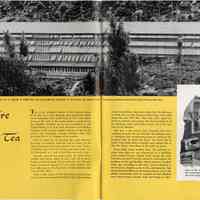
![pp 4-[5]](https://d3f1jyudfg58oi.cloudfront.net/11047/image/79fcff40-fa73-11ed-a641-b3912f9925a9-uFd2pH7.tn.jpg)
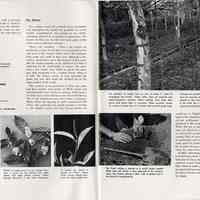
![pp 8-[9]](https://d3f1jyudfg58oi.cloudfront.net/11047/image/7c5fce70-fa73-11ed-a641-b3912f9925a9-uFd2qNW.tn.jpg)
![pp [10-11]](https://d3f1jyudfg58oi.cloudfront.net/11047/image/7d9170a0-fa73-11ed-a641-b3912f9925a9-uFd2qnq.tn.jpg)
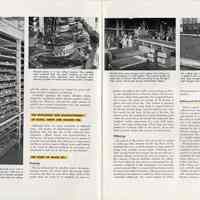
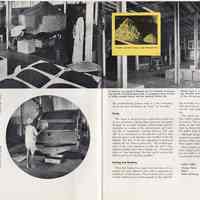
![pp 16-[17]](https://d3f1jyudfg58oi.cloudfront.net/11047/image/8125e200-fa73-11ed-a641-b3912f9925a9-uFd2sYE.tn.jpg)
![pp [18]-19](https://d3f1jyudfg58oi.cloudfront.net/11047/image/82598000-fa73-11ed-a641-b3912f9925a9-uFd2ssP.tn.jpg)

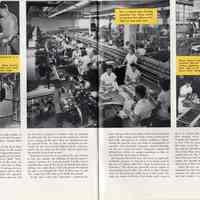
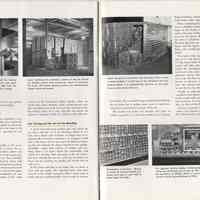
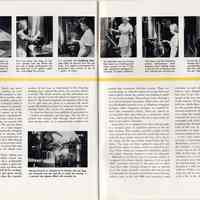
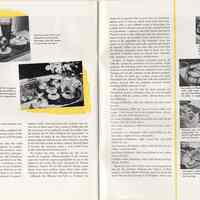
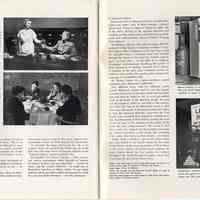
![pg [32] back cover](https://d3f1jyudfg58oi.cloudfront.net/11047/image/8ab08280-fa73-11ed-a641-b3912f9925a9-uFd3wdo.tn.jpg)
